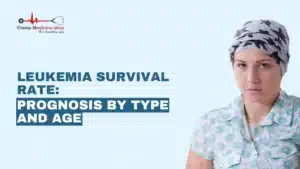Many conditions can cause pain in the lower right abdomen. Some of them are generally serious and require immediate medical assistance. This makes it essential for you to know the possible causes of lower right abdominal pain to determine if it is serious.
What is the abdomen? It is the area between your chest and pelvis. It incorporates various important organs involved in digestion, including the liver and the intestines. The lower right part of the abdomen consists of a portion of the colon and the right ovary in women.
Read on and get to know some of the possible causes of pain in the lower right abdomen, their symptoms, and whether you should seek medical treatment for each of them.
Some Less Serious Causes
Lower right abdominal pain can signify many different things. It is often brief and does not require any treatment. These less serious lower right abdominal pain causes include:
- Indigestion: You can feel pain in the lower abdomen region due to indigestion; it can accompany other symptoms, including heartburn and flatulence. Indigestion is easily relieved with over-the-counter medicines but may need medical assistance if symptoms last for more than weeks.
- Intestinal gas: When food is not digested appropriately, gas can accumulate in the intestines. This may cause discomfort and bloat in the abdominal region. Symptoms will generally disappear in a matter of a few hours, but persistence for many weeks could suggest a more serious underlying condition, like lactose intolerance.
- Menstrual cramps: Women can feel lower right abdominal pain before or during their menstrual cycles. The pain is usually dull and persistent. It can also be accompanied by pain in the back and legs, nausea, or headaches. Symptoms generally occur in waves and last for various days.
More Serious Causes
In some cases, pain in the lower right abdomen could indicate a serious condition, requiring immediate medical assistance.
- Kidney stones: Salts and minerals can accumulate in the kidney to form hard lumps, called stones. The kidney stones can be of varying sizes. The smaller ones usually get passed through the urinary system, while the bigger ones get stuck and induce severe pain around the abdomen, lower back, side, and groin. Since the stones move throughout the urinary system, the pain will vary in terms of location and severity. Other common symptoms of kidney stones include nausea, vomiting, pain when urinating, blood in the urine, and frequent urge to urinate.
- Appendicitis: It is one of the most common causes when the pain is specific to the lower right abdomen. The appendix is a tube-like organ attached to the large intestine. Appendicitis is a health condition in which the appendix becomes inflamed. This leads to a brief pain to develop in the middle of the abdomen, extending to the lower right abdomen and becoming severe.
Other symptoms of appendicitis include – bloating, diarrhea, constipation, nausea, vomiting, and diarrhea. In some cases, it may be required to remove the appendix to ease the pain. The functions of the appendix are unknown, and its removal does not indicate any other health risks.
- Kidney infection: One or both kidneys can become infected by bacteria in the urinary system. Pain generally occurs in the lower back, side, or groin. It can also be sensed in the lower abdomen. This pain is often less severe than that of pain from kidney stones. Please seek medical assistance to minimize the risk of permanent damage. Some other symptoms include fever, loss of appetite, nausea, and diarrhea. The symptoms of kidney infection can be misinterpreted for urinary tract infections, such as cystitis.
- Irritable bowel syndrome: It is a chronic condition of the digestive system. The cause of the condition is yet unknown, and there’s currently no cure for IBS. It causes lower right abdominal pain, along with other symptoms, including gas, bloating, diarrhea, stomach cramps, and constipation.
- Inflammatory bowel disease: It describes a group of conditions that impacts the digestive system. Crohn’s disease and ulcerative colitis both cause an inflammation of the gut and make up most inflammatory bowel disease cases. It can lead to lower abdominal pain, tiredness, rapid weight loss, persistent diarrhea, and bloating.
- Hernia: It is a common problem that causes a localized bulge or lump in the abdomen or groin region. It is often painless and harmless, but at times it can bring pain and discomfort. People may feel soreness around the lump, which may worsen when strained, such as when coughing, sneezing, or lifting a heavy object.
Gender-specific Causes
The pain in the lower right abdomen can also have some gender-specific causes. These conditions are usually severe and require medical treatment.
Male Only
- Testicular torsion: It occurs when the testicle of men that produces hormones and sperm twists. When the testicle rotates, it twists the cord carrying blood to the loose bag of skin (scrotum) located beneath the penis. This may occur after a minor injury to the testicles, vigorous activity, or sleep. This can cause pain in the lower right abdomen along with other symptoms, including nausea, vomiting, swelling in the scrotum, and pain when urinating.
- Inguinal hernia: It occurs when tissue, for example, a part of the intestine, bulges out through a weak spot in the abdominal muscles. The resultant bulge could be painful, specifically when you cough, lift a heavy object, or bend over.
Female Only
- Ovarian cyst: Ovarian cysts are fluid-filled pockets or sacs that develop over the surface of the ovaries. They are generally harmless, but larger ones may lead to dull and sharp pain in the lower abdomen. Ovarian cysts may also cause other symptoms, including:
- Bloating
- Persistent urination
- Difficulty urinating
- Pain during sex
- Becoming full very quickly
- Abnormally light or heavy periods
- Ovarian torsion: It is a condition that happens when an ovary twists around the ligaments that keep it in place. This twisting can interrupt blood flow to the ovary and fallopian tube. Ovarian torsion may lead to severe pain in the lower abdomen. It may also cause some other symptoms, including:
- Abnormal periods
- Nausea
- Pain during sex
- Endometriosis: It is a condition in which tissue that generally lines the uterus develops outside the uterus, such as in the stomach or in the ovaries. It is a chronic condition that may cause pain in the lower abdomen and back. It can cause many other symptoms of varying severity, including:
- Abnormally heavy periods
- Severe period of pains
- Pain during sex
- Pain when urinating or emptying bowels
- Nausea
- Pelvic-inflammatory disease: It is an infection of the genital tract, which can cause lower abdominal pain. Its symptoms are usually mild and infrequent. It includes:
- Pain during urination
- Pain during sex
- Bleeding between periods or after sex
- Nausea
- Fever
- Abnormally heavy or painful periods
- Ectopic pregnancy: This type of pregnancy happens when a fertilized egg is present outside the uterus, such as in either of the fallopian tubes or ovaries. It can cause pain in the lower abdomen, and some other symptoms, including:
- Vaginal bleeding or brown discharge
- Pain when urinating or emptying bowels(overactive bladder)
- Usual signs of pregnancy, including missed period
- Pain around the shoulder
How is Lower Right Abdominal Pain Diagnosed?
Pain in the lower right abdomen usually occurs due to problems associated with the digestive system, reproductive organs, or urinary system. Following tests help the doctor to confirm the diagnosis:
- CT scans
- MRI scans
- Ultrasound imaging
- Blood tests
- Physical examination
- Endoscopy
A general physician will probably refer patients with lower right abdomen to a specialist, including a gastroenterologist, a gynecologist, or a urologist. The treatment a doctor will prescribe depends upon the underlying cause and the severity of the symptoms.













